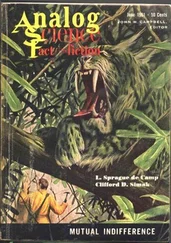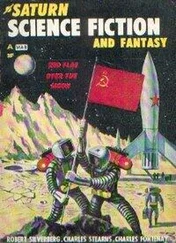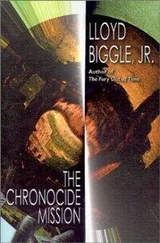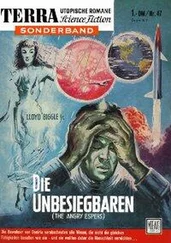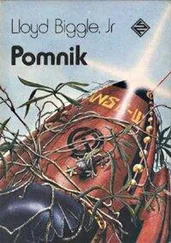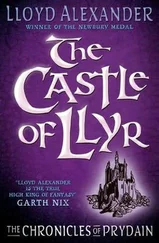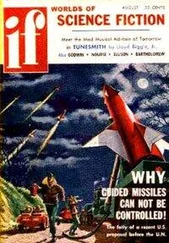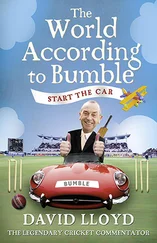Lloyd Biggle Jr. - The World Menders
Здесь есть возможность читать онлайн «Lloyd Biggle Jr. - The World Menders» весь текст электронной книги совершенно бесплатно (целиком полную версию без сокращений). В некоторых случаях можно слушать аудио, скачать через торрент в формате fb2 и присутствует краткое содержание. Год выпуска: 1971, Издательство: Doubleday, Жанр: Фантастика и фэнтези, на английском языке. Описание произведения, (предисловие) а так же отзывы посетителей доступны на портале библиотеки ЛибКат.
- Название:The World Menders
- Автор:
- Издательство:Doubleday
- Жанр:
- Год:1971
- ISBN:нет данных
- Рейтинг книги:5 / 5. Голосов: 1
-
Избранное:Добавить в избранное
- Отзывы:
-
Ваша оценка:
- 100
- 1
- 2
- 3
- 4
- 5
The World Menders: краткое содержание, описание и аннотация
Предлагаем к чтению аннотацию, описание, краткое содержание или предисловие (зависит от того, что написал сам автор книги «The World Menders»). Если вы не нашли необходимую информацию о книге — напишите в комментариях, мы постараемся отыскать её.
The World Menders — читать онлайн бесплатно полную книгу (весь текст) целиком
Ниже представлен текст книги, разбитый по страницам. Система сохранения места последней прочитанной страницы, позволяет с удобством читать онлайн бесплатно книгу «The World Menders», без необходимости каждый раз заново искать на чём Вы остановились. Поставьте закладку, и сможете в любой момент перейти на страницу, на которой закончили чтение.
Интервал:
Закладка:
“I knew the kru was dead because the final picture said so. Is it possible to make out the details of the tapestry from outside the square?”
“No. It’s an extremely large square. The details wouldn’t be visible without binoculars, and the rascz don’t have any.”
“If a tapestry is hung only when the kru dies, the citizens wouldn’t have to see the details to get the message. Do you have a teloid of it?”
Jorrul wheeled in a projector and snapped the cube into it. Farrari studied the projection meditatively. “In my report I noted that the final scene—the one without the kru— was crudely done. I was wrong. It was hastily done.” The six pairs of eyes were now frowning into the projection. “A religious tradition,” Farrari went on. “The kru is dead. The kru’s portrait is on the facade of the Life Temple. The portrait of a dead kru on the Life Temple is sacrilege. So, in a frenzy of haste, slap the final scene onto the tapestry so it can be hung over the facade and the portrait removed.”
“Interesting,” Jorrul remarked politely. “But why no public announcement?”
“You’re asking the wrong question,” Farrari said. “Either the mere hanging of the tapestry is announcement enough, or it’s considered none of the public’s business. The question is—what are they waiting for? The kru is dead. If they were giving him a state funeral, they would have announced his death and at least started preparations. They haven’t, so they probably won’t. So why don’t they invest, or crown, or elevate, or whatever it is they do to the new kru, and carry on?” He thought for a moment. “Prochnow has the idea that the dead kru selects the eye through which he will watch over his subjects for all eternity, and when he dies he’s buried behind it. If true, the kru’s death means only that he’ll be watching over his people from a different residence. The really significant thing would be the elevating of the new kru. And the new kru—” He paused. “Of course. They can’t crown the new kru until his portrait is on the Life Temple. The Kemple of the kru without a portarit of a live kru to adorn it is likewise sacrilege. Right now the new kru should he sitting for his portrait, and because it’s a portrait of the kru, they won’t dare to do it hastily.”
The others exchanged solemn glances that suddenly twisted into grins. Jorrul said, “One of our agents—that’s 178—is a krolc, a priest’s lay servant, which is the closest we’ve ever been able to place anyone to the priesthood. His master was ordered to Scorv for the ceremonies of enshrinement and coronation—canonization might be a better word, the new kru is invested as a god. Anyway, 178 got to come along. It’s the first time we’ve had an agent inside the Life Temple—legally, that is.”
“Will he be able to take some teloids?” Farrari asked.
“How’s that?”
“Teloids. Of the interior of the Life Temple. I don’t have interiors of a single temple or palace.”
Jorrul said irritably, “Of course. He’s already taken some. Anyway, he reports that every prominent artist in Scorvif is at work on reliefs of the new kru. When one of them comes up with something the kru likes—or maybe something the priests like—the ceremonies can commence. They’ll take down the old kru’s tapestry, hang a blank one, perform the necessary in cantations, and when they remove that the new kru’s portrait will be in place. The Holy Ancestors will have spoken. Prochnow thinks they’ll make a production of it and drag the ceremony out for days.”
“When can I have them?” Farrari asked.
“Have what?”
“The teloids of the temple’s interior?”
Jorrul shrugged. “When they’re processed, I suppose.”
Farrari wrenched his mind back to the business at hand. His anger, when it finally came, was not less fierce because he’d been slow to react. They had set a trap for him, and the fact that he’d made a lucky hit did not distract him from the realization that he could just as easily have made a fool of himself. Testing, he thought, looking about the table with cold contempt, was a game two could play. They’d had their fun with their Cultural Survey toy; he was entitled to a share of amusement in return. He would hand them a problem that no IPR manual could cope with and watch them squirm.
“That’s very interesting,” he mused. “The ceremony, I mean. Is the intent to give the impression that the Holy Ancestors selected the kru’s successor? What I mean is this: Is the mechanics of this known to everyone and, therefore, just a formality, or will the identity of the new kru he revealed only when the portrait is unveiled?”
“We know the identity now,” Jorrul said. “The new kru is at the temple sitting for his portrait, as you put it. It’s one of the old kru’s younger sons—the fourteenth, I believe. There’s a fracas at base over the question of how he was selected. Prochnow thinks he was the kru’s favorite and, therefore, his heir; Heber Clough thinks he was the favorite because he was the heir and some obscure formula of succession is involved. We in the field weren’t aware that the kru had a favorite—son or anything else. I haven’t answered your question, have I?”
“No,” Farrari said. “I was wondering if the priests make the selection and use this ceremonial fa-dela to announce their decision.”
“I don’t know. It may take us centuries to unravel all the details about the succession.”
“But do the kru’s subjects believe?” Farrari persisted. “Do they really think the Holy Ancestors place the portrait of the new kru behind the tapestry, or is it a convention that they profess to accept while cynically ignoring the bulges made by the priests working there?”
“We don’t know,” Anan Borgley said. “This is the first succession we’ve observed, and thus far the average citizen—we work at being absolutely average—seems to know nothing about it, so we know nothing about it.”
“Do you have a teloid of the old kru’s relief?”
Jorrul thought he did, rummaged through an unsorted box of cubes, decided he didn’t, and finally found one. The others waited indifferently as he snapped it into the projector and the old kru’s wrinkled face formed in front of them. Farrari studied it intently, slowly shaking his head.
“I wish it were a painting,” he said finally. “A painting I think I could manage, but I never was worth a damn at sculpture.”
Jorrul sat down heavily. “What’s that about painting?”
“I was thinking what a lovely joke it would be if they dropped the tapestry and found someone else’s portrait there. An older son, or a nephew, or even a total stranger. What would happen?”
“That’s an interesting question, but, of course, we couldn’t interfere.”
“Why not? DEMOCRACY IMPOSED FROM WITHOUT doesn’t say a thing about switching portraits.”
“Other rules do. We can’t tamper with a religious ceremony.”
“We wouldn’t. We’d just alter one of the props.”
“Even if there’s no rule against it,” Jorrul said, “and there almost certainly is, and even if the coordinator were to approve it, and he almost certainly wouldn’t, the preparations would require more time than we’d have. The artists work ing on the new kru’s portrait have a long start on you, and anyway, if you’re no good at sculpture—” He dismisssd the subject with a shrug.
Читать дальшеИнтервал:
Закладка:
Похожие книги на «The World Menders»
Представляем Вашему вниманию похожие книги на «The World Menders» списком для выбора. Мы отобрали схожую по названию и смыслу литературу в надежде предоставить читателям больше вариантов отыскать новые, интересные, ещё непрочитанные произведения.
Обсуждение, отзывы о книге «The World Menders» и просто собственные мнения читателей. Оставьте ваши комментарии, напишите, что Вы думаете о произведении, его смысле или главных героях. Укажите что конкретно понравилось, а что нет, и почему Вы так считаете.

